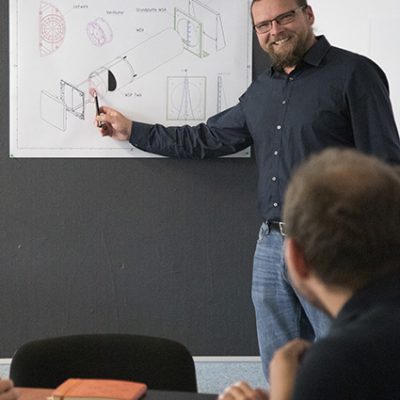The controlled living space ventilation can be divided into three large sub-areas:
- Decentralized ventilation systems with heat recovery
- Central ventilation systems with heat recovery < / li>
- Exhaust air systems without heat recovery
Historically, decentralized ventilation systems with heat recovery represent the latest development on the ventilation market. The first decentralized ventilation units were already ready for the market in the 1990s and the technology has been successively developed and improved since then. Based on experience and learning curves, the manufacturers and providers from the beginning until today are leaders in this segment.

If you compare the three sub-areas, decentralized ventilation solutions enjoy their decisive advantages, growing acceptance and popularity on the ventilation market. In recent years, decentralized ventilation systems have therefore recorded strong growth rates in the double-digit range, in which market shares were also taken over by central ventilation systems. In terms of volume, even more decentralized than centralized ventilation devices are now being sold. Architects / planners, installers and users particularly appreciate the simplified installation of decentralized ventilation devices, as well as user maintenance without specialist companies and the energy savings thanks to low power consumption and high heat recovery. The market itself is characterized by a high rate of innovation and a large number of newcomers, with the majority of the market being dominated by a few established system providers. In an international comparison, innovations and new technologies are accepted at different rates in the individual country markets. Due to their market structure, certain countries are more willing to accept innovations and innovations than others. In terms of decentralized ventilation, Germany is the “lead market” and has the highest number of decentralized systems in an international comparison. The following guides give you an overview of important areas in the German ventilation market.
All topics

EnEV - Energy Saving Ordinance
In Germany, a good 40 percent of energy consumption and around a third of CO2 emissions are caused by buildings. Saving energy in this area offers great potential for reducing Germany’s dependence on energy imports. This potential is to be used by the Energy Saving Ordinance, or EnEV for short.
DIN 1946-6 - Ventilation of apartments according to the ventilation concept
The requirement of a ventilation concept according to DIN 1946-6 is intended to clarify fundamental questions about the ventilation of a building or a usage unit. Changes to the building envelope result in changes to the ventilation of the rooms in this building, which is why a standardized ventilation concept must be created for every new building as well as for extensive renovations.


TÜV Süd and DIBt approval of ventilation devices
Ready-to-connect ventilation units that are manufactured to be permanently installed and operated in buildings are construction products. In this context, the model building regulations and the individual state building regulations require a building inspection certificate of usability for ventilation devices.
The energy efficiency label for ventilation systems
The energy efficiency label is known from many technical devices: colored efficiency scales make the energy consumption of products visible and make it easier for customers to choose energy-efficient products when purchasing.



